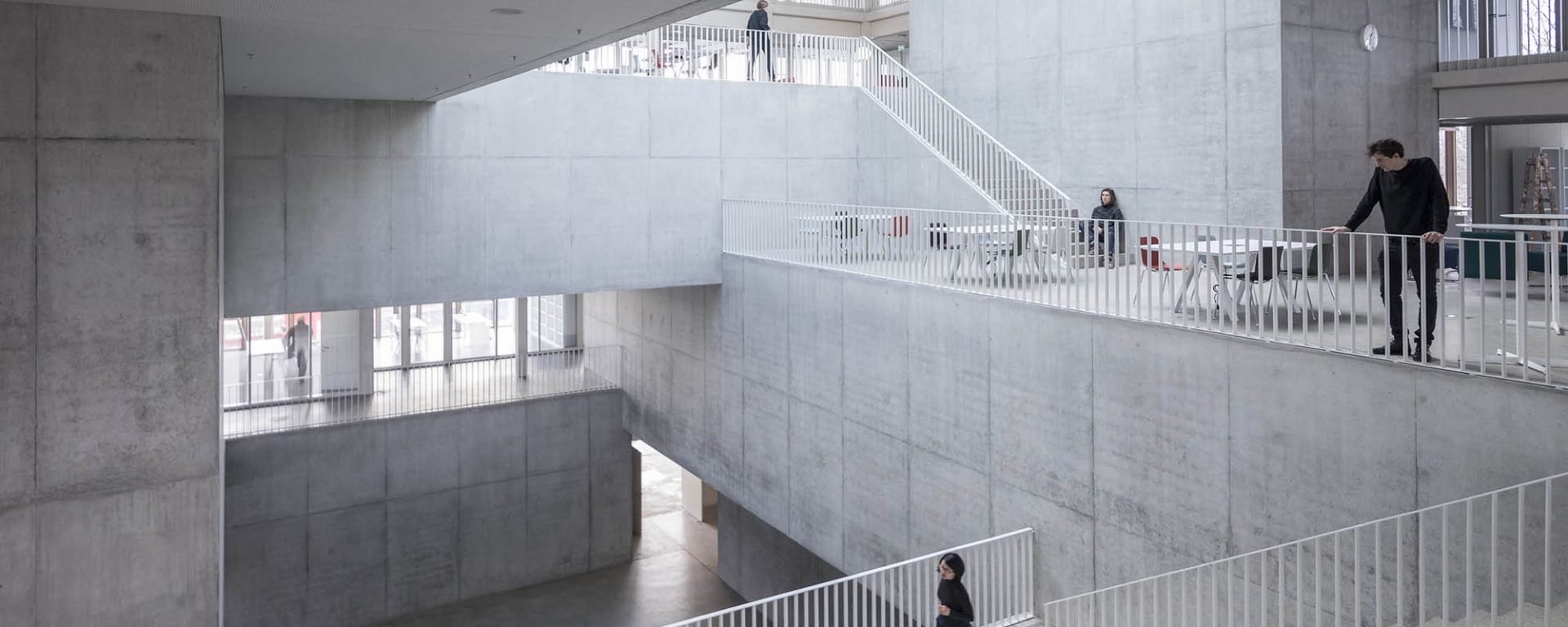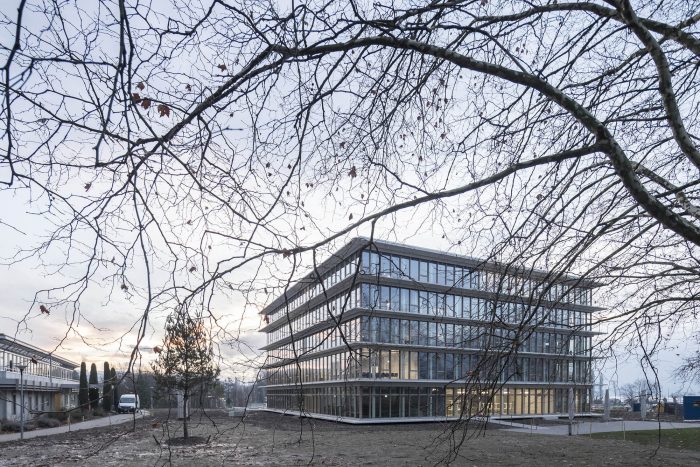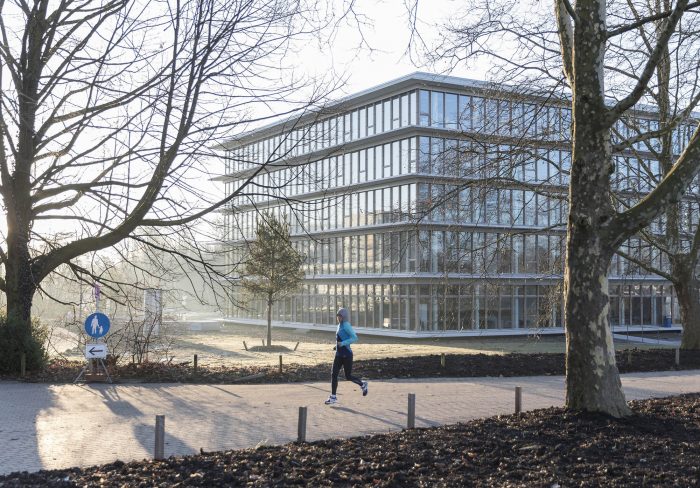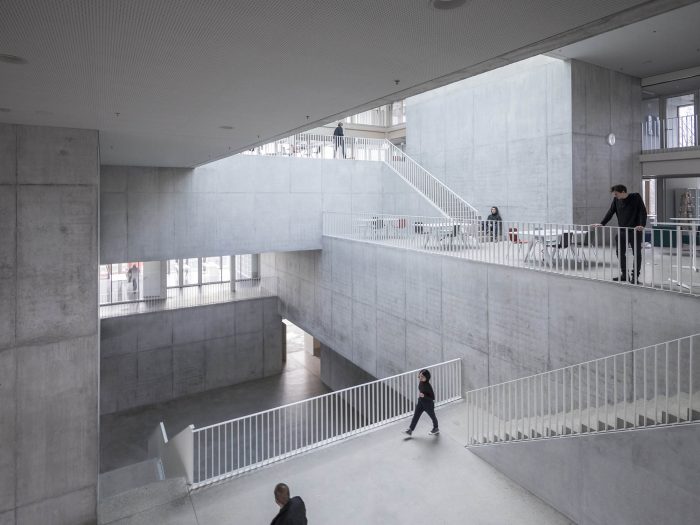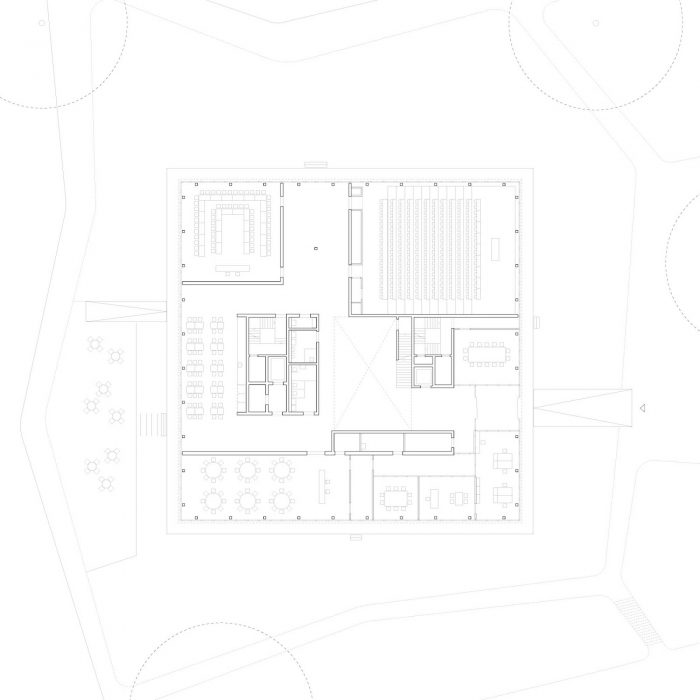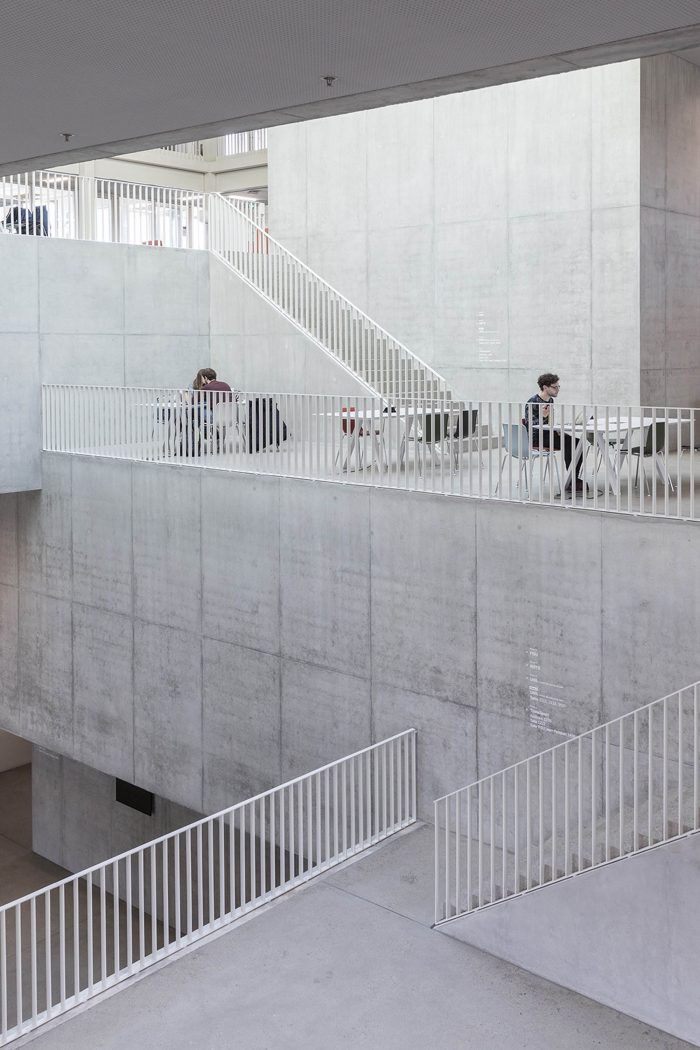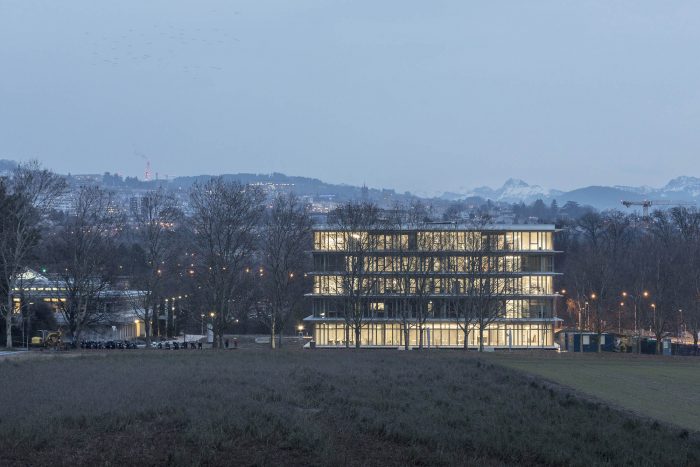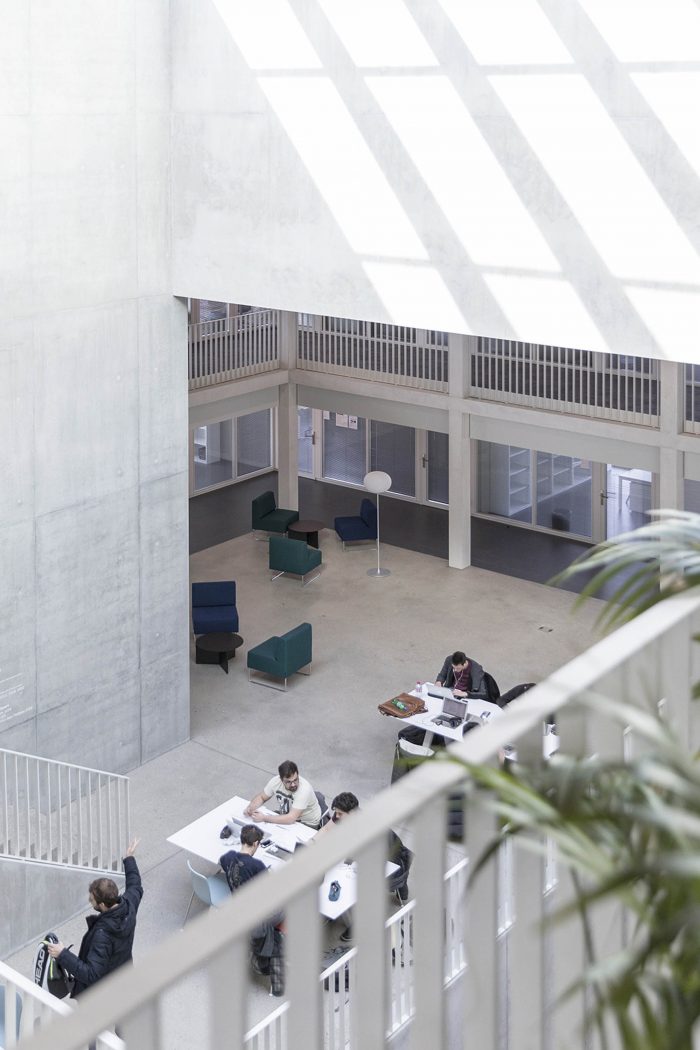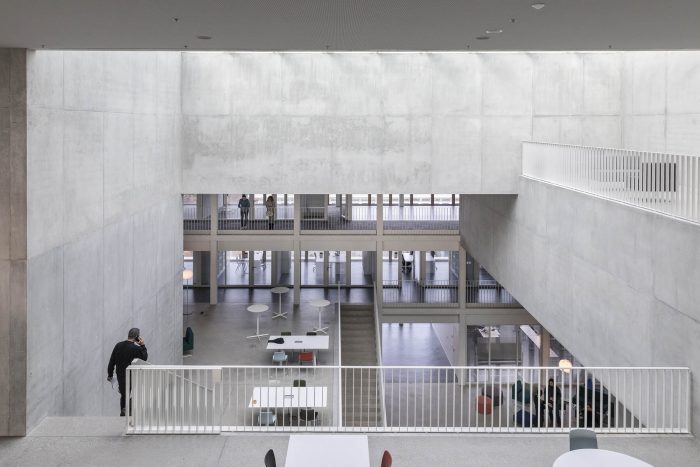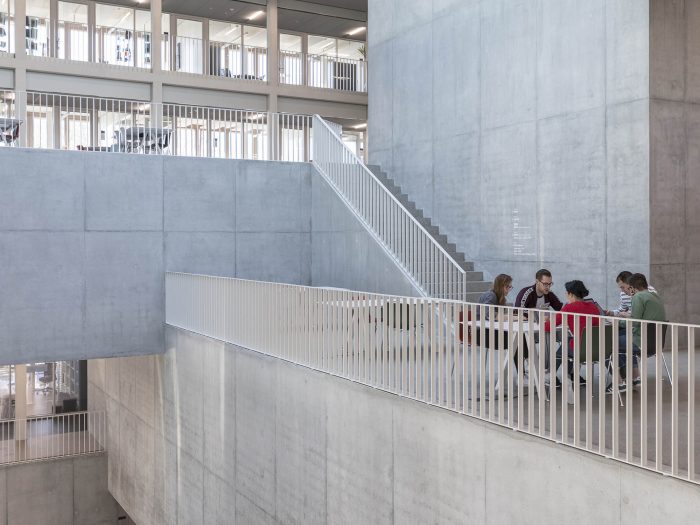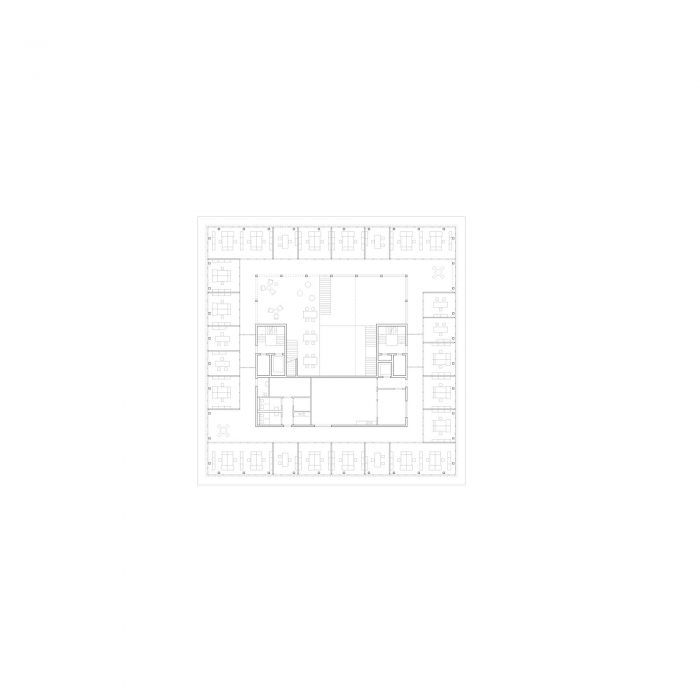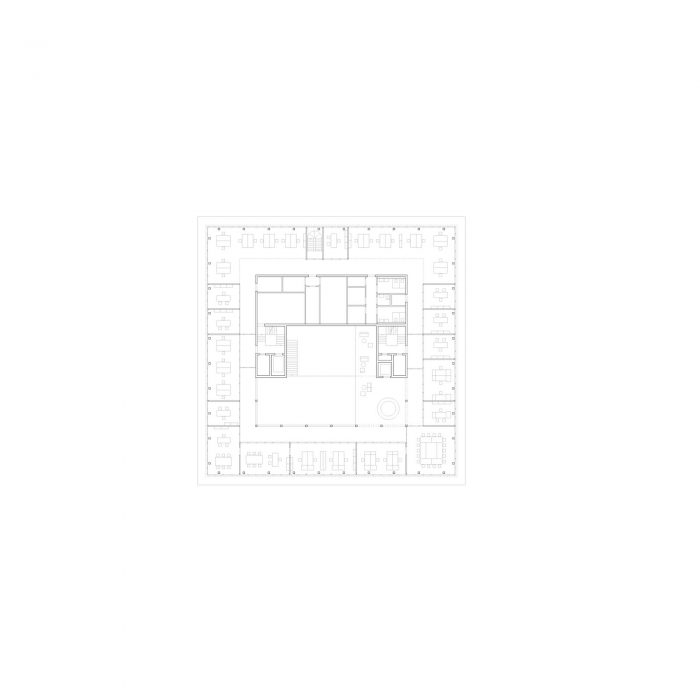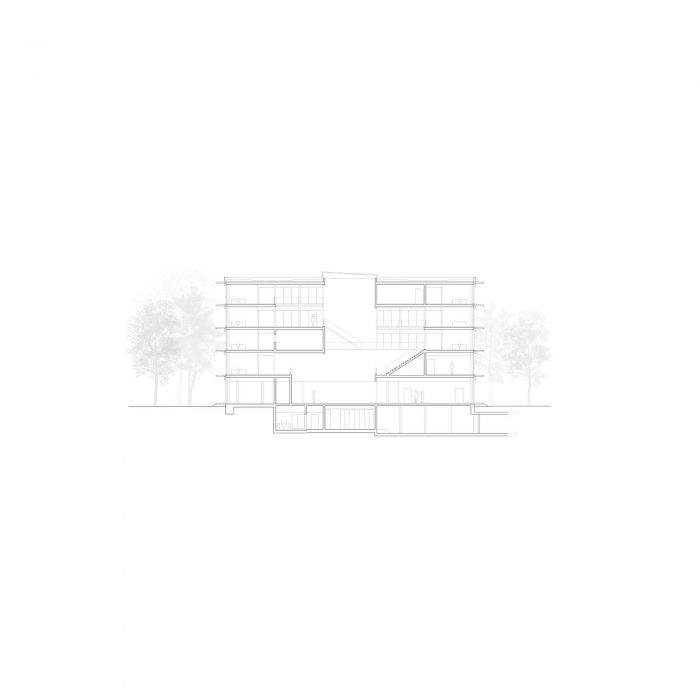位于洛桑大学校园内,以紧凑的形式将四家公立和私立机构联合起来,建立了一个新的体育科学研究和教学的能力中心。它安静的外表掩盖了内部繁忙的交流蜂巢。这座新建筑为集体使用提供了多样化的空间,促进了各组织之间的正式和非正式合作,同时也对大学开放和邀请。
Located on the University of Lausanne campus, the compact form unites four public and private institutions to create a new center of competence for researching and teaching sports science. Its quiet exterior belies a bustling beehive of exchange inside. This new building provides diverse spaces for collective use, promoting formal and informal collaborations between the organizations while being open and inviting to the university.
只要有可能,每个建筑组件都会承担双重职责。雕塑般的内芯同时具有结构性和体验性。它还隐藏了所有的服务和物理测试实验室,同时形成了梯田的景观。视觉上的透明性和日光为这些非正式的工作和交流空间注入了活力。
Whenever possible, each building component does double duty. The sculptural inner core is simultaneously structural and experiential. It also conceals all the services and physical testing labs while forming a landscape of terraces. Visual transparency and daylight animate these spaces for informal work and exchange.
一个灵活的办公环围绕着这个中庭。轻盈的隔断确保了多种类型的办公室和会议室可以重新配置。因此,每个机构都可以保持自己的私密性,同时从共享建筑的协同作用中获益。乍一看是一座简单的建筑,但却展开了一系列丰富的体验,从私密到宏伟,让每个用户都有选择。
A flexible ring of offices surrounds this atrium. Light-weight partitions ensure possible reconfiguration for the many types of office and meeting rooms. Each institution can therefore maintain its privacy while profiting from the synergy of sharing a building. What appears at first glance as a simple building unfolds into a series of rich experiences, from intimate to grand, that allow each user a choice.
该建筑采用低碳和高科技的解决方案,达到Minergie-P生态可持续标准,是第一座获得SméO认证的建筑。使用可再生湖水的热活性板,加上自然通风,确保全年舒适度和低能耗。
The building engages with low and high-tech solutions to achieve Minergie-P eco-sustainable standards and is the first building to receive the SméO certification. Thermally-activated slabs using renewable lake water, together with natural ventilation ensure year-round comfort with low energy consumption.
办公环的深度使所有工作空间都能享受到日光,同时接近户外,而合理性确保了重新配置的长期灵活性。此外,70%的混凝土被回收利用,许多产品都是本地采购,最大限度地减少了碳足迹。经济的手段转化为一个高绩效而又经济的建筑。
The depth of the office ring allows for daylight at all workspaces as well as proximity to the outdoors while the rationality ensures long-term flexibility for reconfiguration. In addition, 70% of the concrete is recycled and many products are locally sourced, minimizing the carbon footprint. The economy of means translates into a highly performative yet cost-effective building.
建筑师:Karamuk Kuo
年份:2018年
照片:Laurian Ghinitoiu
制造商:dormakaba, Veralubois
合伙人:Jeannette Kuo, Ünal Karamuk
项目经理:Flavia Sutter
建筑师团队:Andreas Papadantonakis, Catarina Bello, Brian Jordan, Philippe Grossenbacher
实习生:Samuel Dautheville,Adrian Comte,Alexandre Lebet
结构工程师:Kartec Engineering & Weber, Brönnimann AG
总承包商:HRS Real Estate AG
城市:洛桑
国家:瑞士
Architects: Karamuk Kuo
Year: 2018
Photographs: Laurian Ghinitoiu
Manufacturers: dormakaba, Veralubois
Partner:Jeannette Kuo, Ünal Karamuk
Project Manager :Flavia Sutter
Architect:Andreas Papadantonakis, Catarina Bello, Brian Jordan, Philippe Grossenbacher
Intern :Samuel Dautheville, Adrian Comte, Alexandre Lebet
Structural Engineer:Kartec Engineering & Weber, Brönnimann AG
General Contractor:HRS Real Estate AG
City:Lausanne
Country:Switzerland

